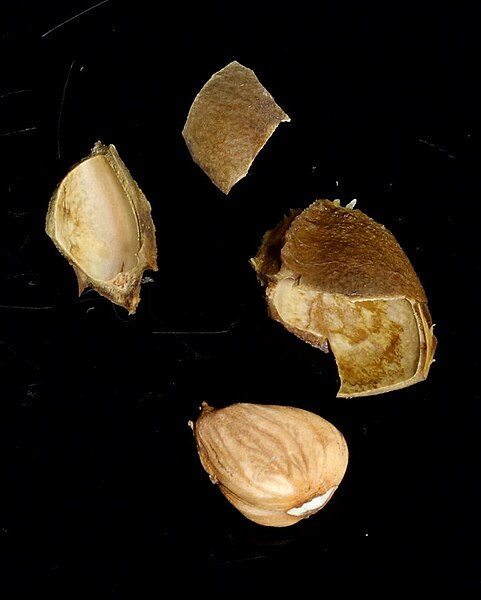By : Jonathan Bell
Significant reassessment in recent years a of the nature and causes of cancer has taken place. Cancer was formerly believed to be a localized disease, characterized by a lesion, usually in the form of a growth, which appeared at some specific part of the body. This localized lesion was thought to be the result of an activity produced by an invading virus, carcinogenic agent, or some form of trauma.
Today, the conviction among researchers and physicians, which is a growing conviction is that cancer is a complex disease that is the end result of a disturbed metabolism (body chemistry).
It is an insidious disease that involves the entire body. The frequent reoccurrence of a malignancy after treatment with the conventional methods of surgery, radiation and/or chemotherapy is because the basic underlying metabolic cause of the cancer is rarely considered and consequently remains uncorrected.
Amygdalin, or laetrile/B17, is a relatively simple compound found in much of our food supply. It is most abundant in the seeds of non-citrus fruits. Most commercially prepared amygdalin is extracted from the seeds of the apricot.
Amygdalin is composed of:
Two molecules of glucose (a sugar), One molecule of hydrocyanic acid (an anti-neoplastic compound),ane One molecule of benzaldehyde (an analgesic).
In metabolic therapy, the amygdalin is broken down into its component parts as a result of the action of the betaglucidase. This enzyme is found in abundance in cancer cells, and is relatively deficient in normal cells.
Consequently, the cyanide is released only where there is an active cancer lesion. This liberation of cyanide under controlled and safe conditions insures that an adequate dosage can be administered without the threat of toxic side effects.
This absence of cyanide toxicity is further insured by the action of the thodanese, another enzyme. This enzyme is present in large quantities in normal cells but in very small amounts in cancer cells.
Detoxification of cyanide occurs, therefore, in normal mammalian tissue through the action of this rhodanese which, in the presence of sulfer-bearing compounds, converts free cyanide to thiocyanate, a perfectly nontoxic compound. The thiocynate is excreted in the urine.
Slow drip infusion. The most efficacious mode of administration is through the slow-drip infusion technique which was developed in Tijuana, Mexico. It became apparent that the breakdown of amygdalin and its subsequent detoxification was very rapid.
If it were to be administered over a longer period of time, this could be overcome. In addition, the amygdalin must pass through many biological membranes in order to reach its site of action. This can be accomplished by combining the amygdalin with Dimethylsulfoxide (DMSO-laboratory grade).
Finally, as vitamin C is known to slow the growth of tumors, it is added to allow the amygdalin and the rest of the metabolic therapy more time to work.
The amygdalin should be added just prior to injection to insure maximum potency. This complete infusion is administered intravenously over a 2 to 3 hour period.
More rapid administration can result in a localized burning sensation due to the large amounts of vitamin C. This infusion is administered daily over the first 21 days of metabolic therapy.
In some instances where the slow drip infusion is not practical, intravenous administration of amygdalin can be used. This method provides the same high concentration in the blood as the slow drip infusion. Three vials (3 grams each) are administered daily in a slow intravenous push, usually in the brachial vein just proximate to the elbow. Preferably this administration should be between meals. The intravenous administration should be daily for 21 days.
Oral Ingestion is the most convenient and most frequently used method of amygdalin administration. The patients leaving the clinic are placed on oral amygdalin. Also, because of the difficulty for some patients in going to the physician's daily, many doctors prefer this method.
Normally for treamtment the tablet size is 500 milligrams (mg). Two of these tablets should be given 3 times a day. If patients have difficulty swallowing, the tablets may be broken up and added to soft food. The patient should take 1 tablet six times a day.
The preventive tablet size is 100mg. One or two tablets should be taken daily. This data is provided for informational purposes only by Cyto Pharma of Mexico. This company has been in the market since 1971 and are well known worldwide. They are the leader in the field of the amygdalin process and their research staff is constantly working to upgrade their products.
This is one way of an alternative cancer treatment protocol that is used by a number of naturopaths. Author Resource:- Joni Bell has many years of extensive study in the area of natural cancer prevention and treatment. He has numerous success stories of people being diagnosed living cancer free with use of alternative methods. Cancer Free
Article From Article Health And Fitness

1 comment:
Exactly on target. Only one added comment I would make is that a person with cancer needs to boost their immune system with AHCC or Samento (cat's clas).
http://www.alternatecancercure.com/a/?ear
Post a Comment